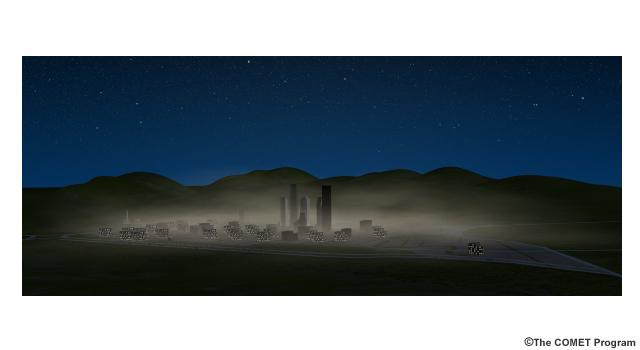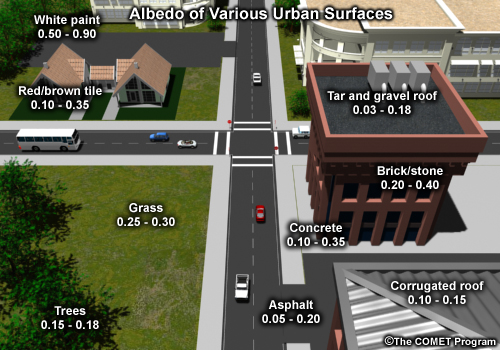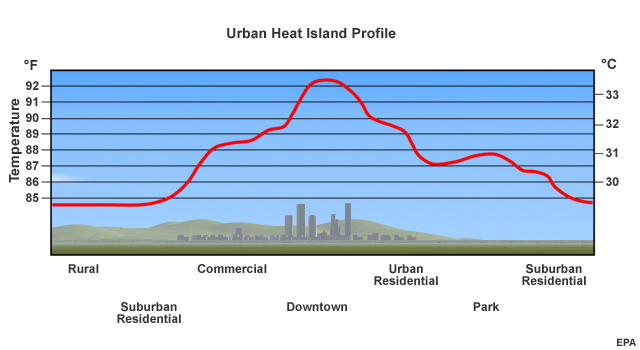Heat and the City

When Atlanta hosted the Olympics in 1996, the National Weather Service collected detailed data on the region’s weather in order to predict conditions for the competing athletes. Scientists studying this data saw that urban Atlanta was consistently warmer than surrounding rural areas, especially at night. They also noticed something else: sprawling metro Atlanta and areas downwind of Atlanta actually got different amounts of rain and more
What they were seeing was the impact of the urban heat island effect.

Question
Which of the following characteristics of the built environment play a role in creating the urban heat island effect? (Choose all that apply.)
All of these are factors that increase the amount of heat trapped and produced in an urban setting.
Please continue watching the video above.

Heat islands form as vegetation is replaced by asphalt and concrete for roads, buildings, and other structures built to accommodate growing populations. Those surfaces absorb - rather than reflect - the sun's heat, causing surface temperatures and overall ambient temperatures to rise. The result: more heat and more air pollution over cities and suburban areas than the surrounding countryside.

The impact of this urban heat island varies by city. Local topography, native vegetation, weather, and geographic location can enhance or inhibit the heat island effect. The effect was so large and noticeable in Atlanta because the fast-growing region had been converting an average of 55 acres of trees per day to roads, parking lots and rooftops.
Let's take a closer look at specific causes of the urban heat island, how the urban heat island impacts our quality of life, and what your viewers can do to dampen the effects.